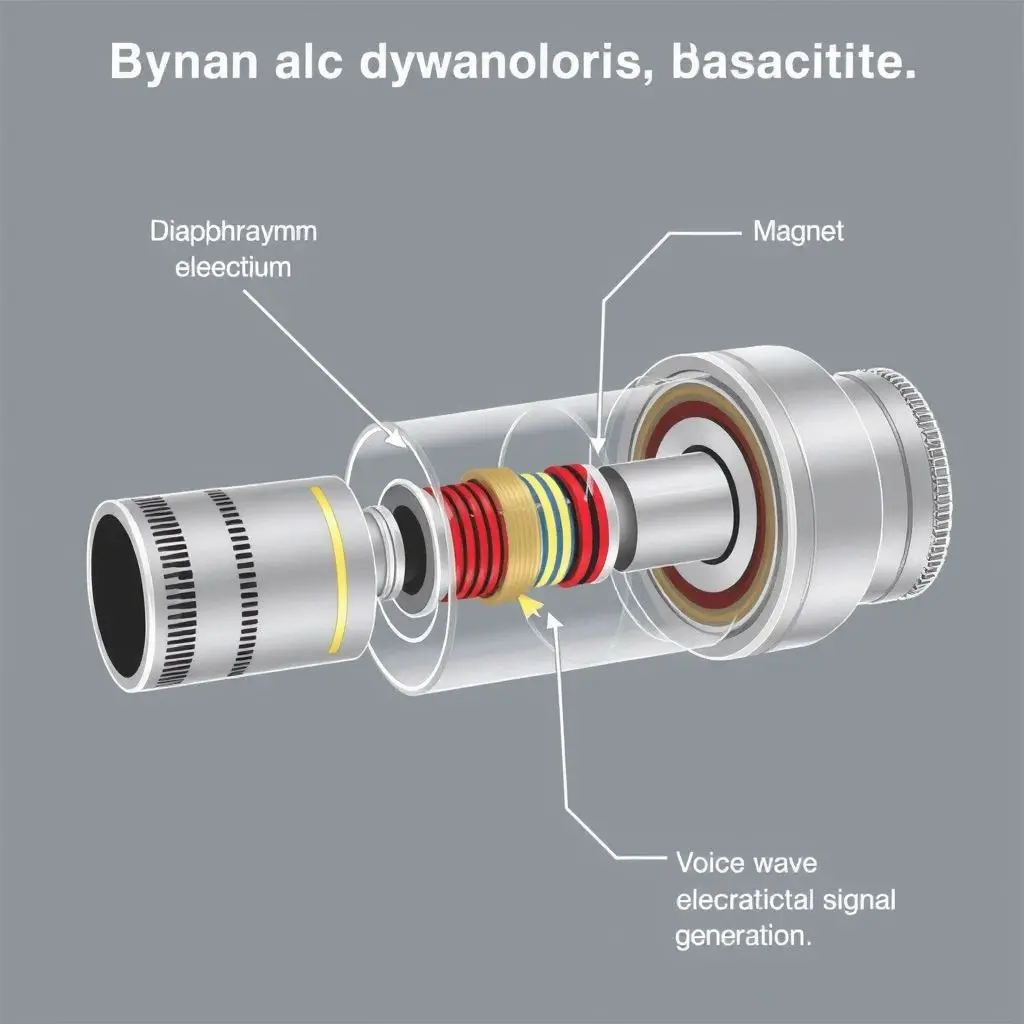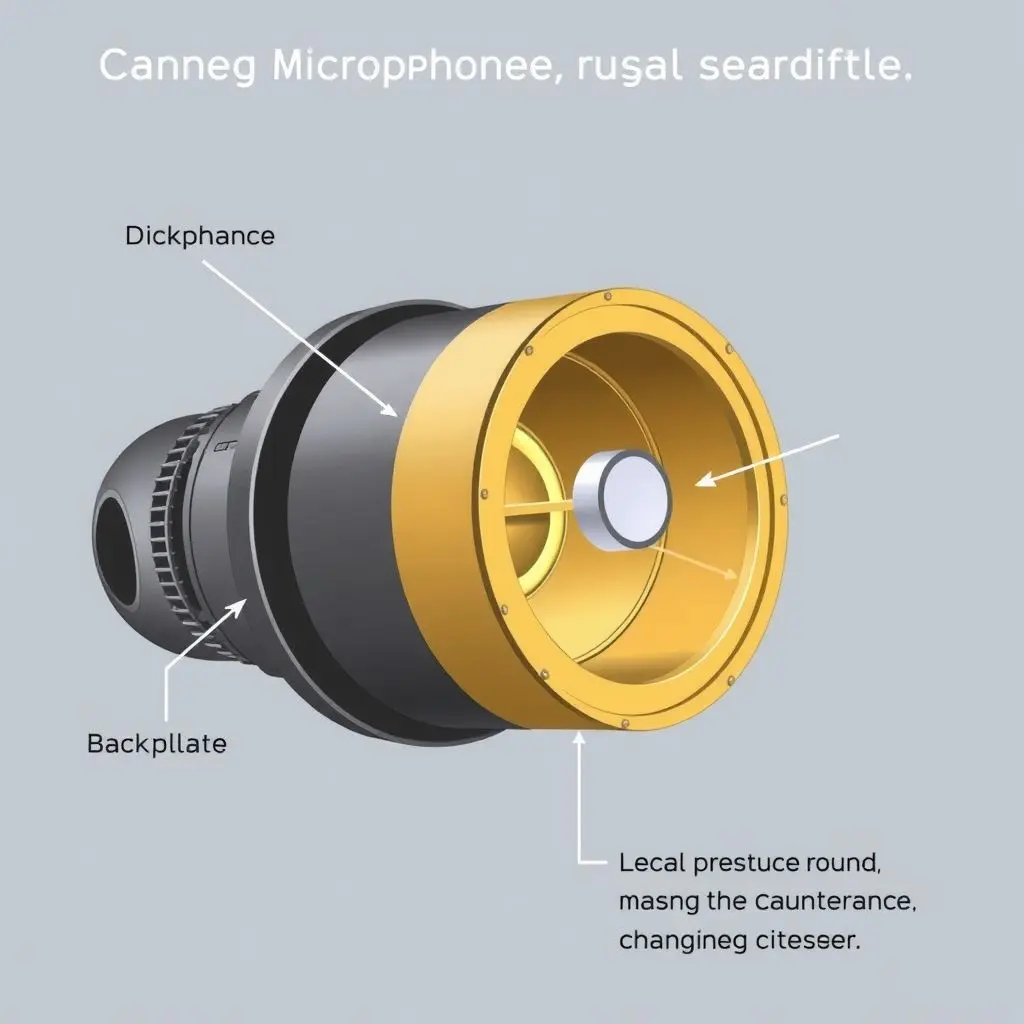Ever found yourself marveling at how your voice seems to magically zip across the internet during a video call? Or how your smart speaker instantly perks up, ready to obey your command, at the mere mention of its name? This everyday magic all begins with an often-underestimated marvel of technology: the microphone. But it’s not just about capturing sound; it’s about an intricate dance of physics and electronics that transforms physical vibrations into the language of computers – digital data.
So, buckle up! We’re about to embark on an enlightening journey to explore how microphones perform their crucial, everyday alchemy.
Table of Contents
What is Sound, Anyway? The Air’s Invisible Dance
Before we dive into microphones, let’s quickly tune into what sound actually is. At its essence, sound consists of vibrations that travel through a medium – usually air for us – as waves. Think of dropping a pebble into a still pond; the ripples spreading outwards are a good visual analogy for sound waves.

These waves have two key characteristics that microphones need to capture:
- Amplitude: This is the ‘height’ of the wave, which we perceive as loudness or volume. Bigger waves mean louder sound.
- Frequency: This is how many waves pass a point in a certain amount of time, measured in Hertz (Hz). We perceive frequency as pitch. Higher frequencies mean higher-pitched sounds, and lower frequencies mean lower-pitched sounds.
A microphone’s job is to faithfully capture these nuances of pressure change in the air.
The Microphone’s Core Superpower: Transduction
At its heart, a microphone is a transducer. That’s a rather technical term for a device that performs a very clever trick: it converts one form of energy into another. In the case of a microphone, it masterfully converts acoustic energy (the physical vibrations of sound waves) into electrical energy (an electrical signal). This electrical signal, an analog representation of the sound, is the first crucial step towards creating digital data.
Meet the Players: Common Microphone Types and How They Hear
Not all microphones are created equal, and different designs use various ingenious methods to achieve transduction. Let’s look at the most common types:
1. Dynamic Microphones: The Resilient Workhorses
Imagine a tiny electrical generator, but instead of being cranked by hand or powered by steam, it’s animated by the sheer force of your voice or an instrument’s sound! That’s essentially a dynamic microphone at work, leveraging a principle called electromagnetic induction.

Here’s the breakdown:
- A thin, lightweight diaphragm is attached to a small coil of wire (the voice coil).
- This voice coil is precisely suspended within a magnetic field created by a permanent magnet.
- When sound waves hit the diaphragm, it vibrates. This vibration causes the voice coil to move back and forth within the magnetic field.
- This movement of a conductor (the coil) in a magnetic field induces a small electrical current in the coil – an electrical signal that mirrors the pattern of the sound waves.
Pros: Dynamic mics are known for their robustness, ability to handle high sound pressure levels (SPL) without distortion (great for loud sources like drums or guitar amps), and they don’t typically require external power.
Cons: They might not be as sensitive to very subtle nuances or extremely high frequencies compared to condensers.
Common Uses: Live vocal performances, miking loud instruments, broadcasting.
2. Condenser Microphones: The Detail Lovers
If dynamic mics are the sturdy workhorses, then condenser microphones are the sensitive artists, renowned for their ability to capture fine details and high frequencies with remarkable clarity. They operate on an electrostatic principle, essentially acting like a sound-sensitive capacitor.

Inside a condenser microphone, you’ll find:
- A very thin, electrically conductive diaphragm placed incredibly close to a rigid metal plate called the backplate.
- Together, these two components form a capacitor – a device that can store an electrical charge.
- This capacitor is given a fixed electrical charge, either from an external power source called phantom power (typically +48V supplied via the microphone cable) or an internal battery.
- When sound waves strike the diaphragm, it vibrates, causing the distance between the diaphragm and the backplate to change. This change in distance alters the capacitance.
- These fluctuations in capacitance result in changes in the voltage across the capacitor, creating an electrical signal that accurately represents the sound wave.
Pros: Excellent sensitivity, wide frequency response (especially good for high frequencies), and superior transient response (capturing quick, sharp sounds accurately).
Cons: Generally more fragile than dynamic mics, can be more susceptible to distortion from very loud sounds if not designed for it, and require power to operate.
Common Uses: Studio recording (vocals, acoustic instruments), podcasting, overhead miking for cymbals, capturing ambient sounds.
3. MEMS Microphones: The Tiny Titans
Ever wondered how your smartphone, laptop, or smart assistant can pack such capable microphones into such tiny spaces? The answer often lies in MEMS (Micro-Electro-Mechanical Systems) microphones. These are marvels of miniaturization, typically fabricated on silicon chips.
While the exact mechanisms can vary, many MEMS microphones also work on a principle similar to condenser mics, with a tiny, pressure-sensitive diaphragm etched into silicon. Their minuscule size, low power consumption, and suitability for automated manufacturing make them perfect for integrated electronics.
The Great Digital Leap: From Analog Signal to Binary Code
So far, our microphone has produced an analog electrical signal. This signal is a continuous wave, a direct electrical imitation of the original sound wave. However, computers and digital devices don’t speak analog; they thrive on the discrete, precise language of digital data – sequences of ones and zeros.
This is where the crucial next step comes in: the Analog-to-Digital Converter (ADC). An ADC might be a dedicated chip on a sound card, an audio interface, or built into the circuitry of a device like a smartphone.
The ADC performs two key operations to transform the smooth analog river into a stream of digital bits:
- Sampling: Imagine trying to accurately redraw a smooth, flowing curve by plotting a series of individual dots. The more dots you use (the more frequently you plot them), the closer your dot-based drawing will be to the original curve. Sampling is precisely this: the ADC takes ‘snapshots’ or samples of the analog signal’s amplitude at very regular, rapid intervals. The number of samples taken per second is known as the sample rate, measured in Hertz (Hz) or Kilohertz (kHz). Common sample rates include 44.1 kHz (CD quality) or 48 kHz (common for video). A higher sample rate generally means a more accurate representation of the original sound, especially its higher frequencies. (Nerdy note: The Nyquist-Shannon sampling theorem dictates that the sample rate must be at least twice the highest frequency you want to capture).
- Quantization: Once we have these discrete snapshots (samples), we need to assign a numerical value to the amplitude (the ‘loudness level’) of each one. This process is called quantization. The precision of this measurement is determined by the bit depth. Think of bit depth as the number of possible ‘steps’ or levels available to describe the amplitude of each sample. A 16-bit recording offers 65,536 possible levels, while a 24-bit recording offers a staggering 16,777,216 levels. Higher bit depth means a greater dynamic range (the difference between the quietest and loudest sounds that can be captured) and a more nuanced, detailed representation of the sound.

The result of this sampling and quantization is a stream of binary numbers – pure digital data that your computer or digital device can understand, store, and manipulate.
The Digital Journey Continues: What’s Next for Your Sound Data?
Once sound is converted into digital data, a world of possibilities opens up:
- Storage: The data can be saved as audio files (e.g., uncompressed WAV files or compressed MP3/AAC files).
- Transmission: It can be sent over networks for phone calls, VoIP (Voice over Internet Protocol) services like Zoom or Skype, or live streaming.
- Processing: Digital audio workstations (DAWs) can manipulate this data in countless ways – adding effects like reverb or echo, editing out mistakes, mixing multiple tracks, or performing noise reduction.
- Analysis: Algorithms can analyze the data for speech recognition (like with Siri or Alexa), music information retrieval, or even medical diagnostics.
Why This Tech Wizardry Matters to You
Understanding the basics of how microphones turn sound into data isn’t just for audio engineers. It can help you:
- Make informed choices: When buying a microphone for podcasting, gaming, or music, knowing the difference between dynamic and condenser types can guide your decision.
- Appreciate everyday technology: It adds a layer of appreciation for the complex processes happening inside your seemingly simple devices.
- Troubleshoot audio issues: Understanding concepts like sample rate and bit depth can sometimes help pinpoint problems in your audio setup.
Got Questions? We’ve Got Answers! (FAQs)
Let’s tackle some common queries about microphones:
Q1: What’s the real difference between a microphone and a loudspeaker?
A: They are essentially opposites in function! A microphone converts acoustic energy (sound waves) into electrical energy. A loudspeaker does the reverse: it converts electrical energy back into acoustic energy (sound waves) that we can hear.
Q2: Is a pricier microphone always the superior choice?
A: Not necessarily. While more expensive microphones often use higher-quality components leading to better sensitivity, lower self-noise, and more accurate frequency response, the ‘best’ microphone heavily depends on the specific application, the sound source, the recording environment, and even the user’s skill. A $100 dynamic mic might be perfect for a loud rock vocal on stage, while a $1000 condenser mic might be ideal for a delicate acoustic guitar in a studio.
Q3: How exactly does noise cancellation work in modern microphones?
A: Noise cancellation, especially in headsets and smartphones, often uses multiple microphone elements. One microphone (or an array) is positioned to capture the primary sound source (like your voice). Other microphones are positioned to capture ambient or background noise. A sophisticated processor then analyzes these signals. It can use techniques like phase inversion (creating an ‘anti-noise’ signal that cancels out the unwanted sound) or advanced algorithms to distinguish between desired audio and noise, effectively filtering the latter out.
Q4: Phantom power – what’s the story there?
A: Phantom power is a DC electrical voltage (typically +48V, though some mics use other voltages) that is transmitted through the same balanced audio cables that carry the microphone’s signal. It’s primarily used to power the active electronic circuitry within condenser microphones and some active ribbon microphones. Dynamic microphones generally do not require phantom power. It’s called ‘phantom’ because the power is carried on the audio lines in such a way that it’s invisible to, and doesn’t affect, microphones that don’t need it (like dynamics).
Beyond the Binary: Appreciating the Art of Sound Capture
From the subtle whisper of wind to the thunderous roar of a concert, sound shapes our perception of the world. The journey of these sound waves – from physical vibrations in the air, through the intricate mechanics of a microphone, to the precise digital language of ones and zeros – is a remarkable feat of engineering.
So, the next time you use a microphone, whether it’s to chat with a friend, record a thought, or command your digital assistant, take a moment to appreciate the unseen symphony of physics and electronics at play. It’s a beautiful blend of science and ingenuity, making our connected, sound-filled digital lives possible. Pretty neat, huh?




